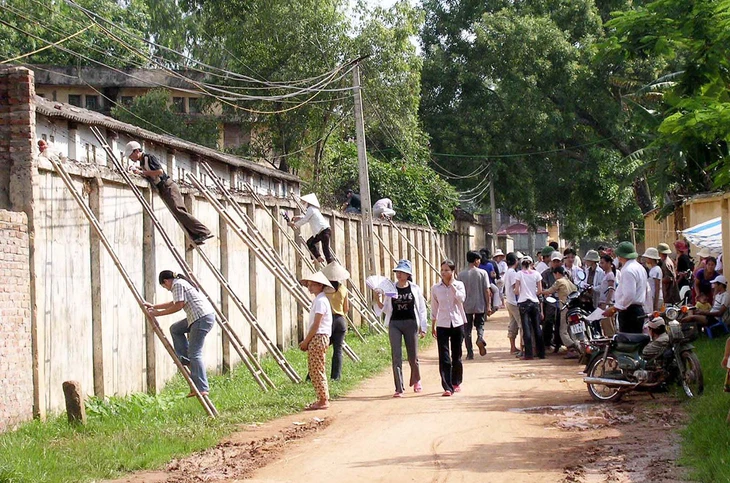
Scene of people using ladders to throw cheat sheets during the high school graduation exam in Ha Tay in 2001 - Photo archive
From the time when "all people took exams"
During the years 2000-2006, corruption in high school graduation exams became so widespread that it no longer needed to be hidden.
A familiar image at exam sites in Ha Tay province (later part of Hanoi ) at that time was people swinging from trees, climbing walls, and even buying long ladders to jump over the fence and jump into the exam area to perform the act of "throwing papers".
The high school graduation exam was therefore "as exciting as a festival". Mr. Xuyen in Thanh Oai (Hanoi) said he was once drawn into the trend of solving exam questions. During the exam, young people who were good at studying, who were or are studying at university like him, were called back to the village to solve the questions, copying them by hand on paper.
"The whole population is like that, so I also mistakenly thought it was normal, even a charity work" - Mr. Xuyen recounted.
Nghe An was once "famous" for the violations at the Nam Dan 2 High School exam site when the chaotic images in the exam room were recorded by teacher Le Dinh Hoang using a recording device. Four clips released by this teacher are evidence of the violations.
Meanwhile, in Ha Tay at that time, another person, teacher Do Viet Khoa, also stood up to denounce the violations in the organization of the examination councils of Phu Xuyen A High School, Dong Quan High School, and Xuan Mai Private High School. The Ministry of Education and Training at that time conducted a surprise inspection and requested the Ha Tay Department of Education and Training to re-grade the exams of these three councils. That was the context before the implementation of the "two no" exam.
"A teacher told me that while he was on duty, a citizen walked straight into the exam room. When asked where he was going, the person calmly replied that he was just going to bring him some documents" - Mr. Nguyen Thien Nhan ( National Assembly delegate of Ho Chi Minh City, former Minister of Education and Training from 2006-2010) recalled the time when he first took office and went on inspections in the localities.
In fact, that was the basis for the minister at that time to launch the campaign to say no to negativity in exams. The 2007 exam was tightened in the stages of invigilation and grading.
Organizing strict exams to evaluate real quality, not using exam results to hold schools and teachers accountable was the policy that made people in the education sector at that time feel secure to "do the real thing".
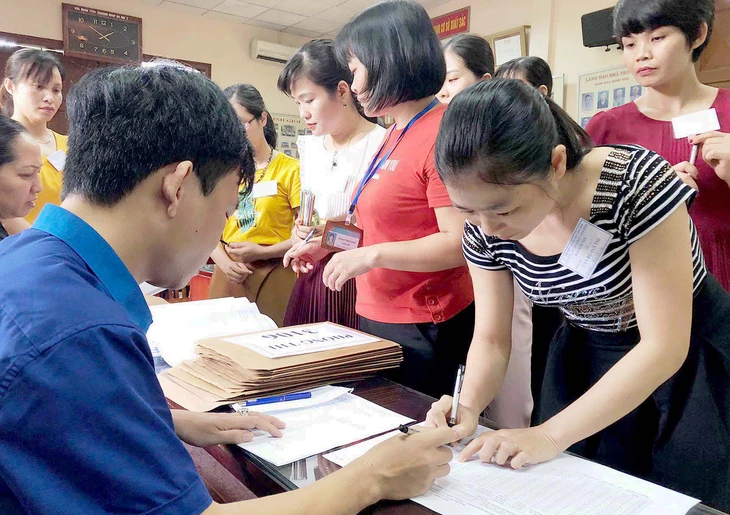
Supervisors at an examination council sign the list of people drawing lots to receive examination rooms during the high school graduation exam - Photo: VINH HA
The heartbreaking numbers
Mr. Le Tien Hung, director of the Nghe An Department of Education and Training during the "two no's" period, recalled: "There were people who told me, 'If you guys do it seriously and ensure fairness, even if my children fail, I will be satisfied.' The fight against negativity has the consensus from leaders at all levels to schools and people, which is a motivation for us."
The 2007 high school graduation exam was conducted seriously, starting with influencing the awareness of "insiders", including officials, teachers, candidates and the general public. The exam regulations were tightened and new content was added.
For example, a strange regulation (compared to the current one): the condition for a review of an exam is that the exam score is 2 points or more lower than the average score of the whole year for that subject. This means that for an exam with a score of 6.5 to be reviewed, the candidate's average score for the subject must be at least 8.5 points...
However, the fundamental thing leading to the changes in the 2007 exam is not only strict regulations but also strict implementation carried out voluntarily and consciously.
In 2007, Nghe An - a locality that is a "land of learning", often ranked at the top of the country's graduation rate, had a surprising result: only 45% of students graduated from high school.
That year, the province with the lowest graduation rate in the country was Tuyen Quang (14.1% for high school students and 0.22% for high school supplementary education).
Tuyen Quang was also the only province where one student graduated with honors. The locality with the rare high graduation rate that year was Ho Chi Minh City (95.1%). That year, only 66.6% of students nationwide passed the graduation exam.
There are many high schools and continuing education centers in Quang Ngai and Phu Tho with a 0% graduation rate. A district in Kon Tum has only one student who graduated.
Although knowing in advance that the exam results would be low, many people in the education sector at that time could not imagine it would be so tragic.
The fact that "study hard, take real exams" is revealed with heartbreaking numbers. With over 1 million candidates taking the exam that year, over 300,000 failed to graduate.
This result led to much controversy with mixed opinions.
Although supporting the "two no's", many educators believe that the sudden "tightening of discipline" does not give schools and students time to adjust and improve the quality of teaching.
A department director recalled: "Although the implementation of the "two no's" had full legal documents, as the head of the education sector at that time, I still had to explain before the meeting of the people's council and answer questions from the provincial leaders.
However, the unstable quality of education reflected in the exam results is also the responsibility of the industry that I am the head of. Previously, the instability was not unknown, but it was not revealed, not exposed to the whole country."
Dealing with the consequences
Mr. Nguyen Thien Nhan recounted: "I know some department directors are under great pressure from their superiors when the graduation exam results are too low. As the one who initiated the fight against negative aspects in exams, whenever a department director encounters difficulties or is reprimanded, the ministry's leaders send people to take turns going there to meet with the provincial secretary and chairman to discuss and clarify the idea of "doing it for real" for the future of the young generation.
The exam that year seemed to have ended, but the issues that had to be resolved continued to drag on. Working groups from the Ministry of Education and Training went back and forth between localities. There were a series of meetings and discussions. Finally, a decision was made: Organize the second round of high school graduation exams for those who failed.
Accordingly, candidates who failed the first round of exams were allowed to take the second round after nearly three months. Candidates could re-register for all subjects with scores below 5.0 or choose to take a second exam for a few subjects with scores below 5.0. That year, schools were open for three months during the summer to provide intensive review for candidates taking the second round of exams.
Nationwide, over 237,000 candidates took the second round of graduation exams in 2007. After two rounds of exams, the high school graduation rate nationwide increased to 80.38% (for high school) and 46.26% (for high school supplementary education), only about 10% lower than last year.
After two exams, Bac Kan ranked "last" with 24.81% graduating. Some localities such as Nghe An, Thanh Hoa, Ha Tay still had about 10,000-12,000 students failing the exam.
In 2008, the Ministry of Education and Training still maintained two rounds of high school graduation exams. The graduation rate in the first round that year was 75.96%. After two rounds of exams, the graduation rate increased to 86.57%. However, since 2009, the high school graduation rate nationwide has increased sharply, with many localities experiencing a sudden increase, reaching 98-99% graduation.
By 2014 (before combining the graduation exam and university entrance exam), the national graduation rate reached 99.02%.
"Three common" university entrance exam
During the years from 2002 to 2014, in addition to the high school graduation exam, the Ministry of Education and Training applied the university and college entrance exam according to the "three common" method, including common questions, common exam time, and final exam results.
The "three common" exam has so far been highly appreciated by experts for its seriousness and reliability. Using common results for admission creates convenience for schools and more opportunities for candidates. However, with three rounds of exams for different groups, the disadvantage of the exam is that it is cumbersome and expensive.
******************
Just a few years after the "two no's" campaign, cheating in exams has recurred. But unlike the previous period, these are sophisticated, organized violations.
>> Next: Shocking fraud cases
Source: https://tuoitre.vn/50-nam-ky-thi-tot-nghiep-thpt-ky-4-ky-thi-thoi-hai-khong-2025062811200237.htm


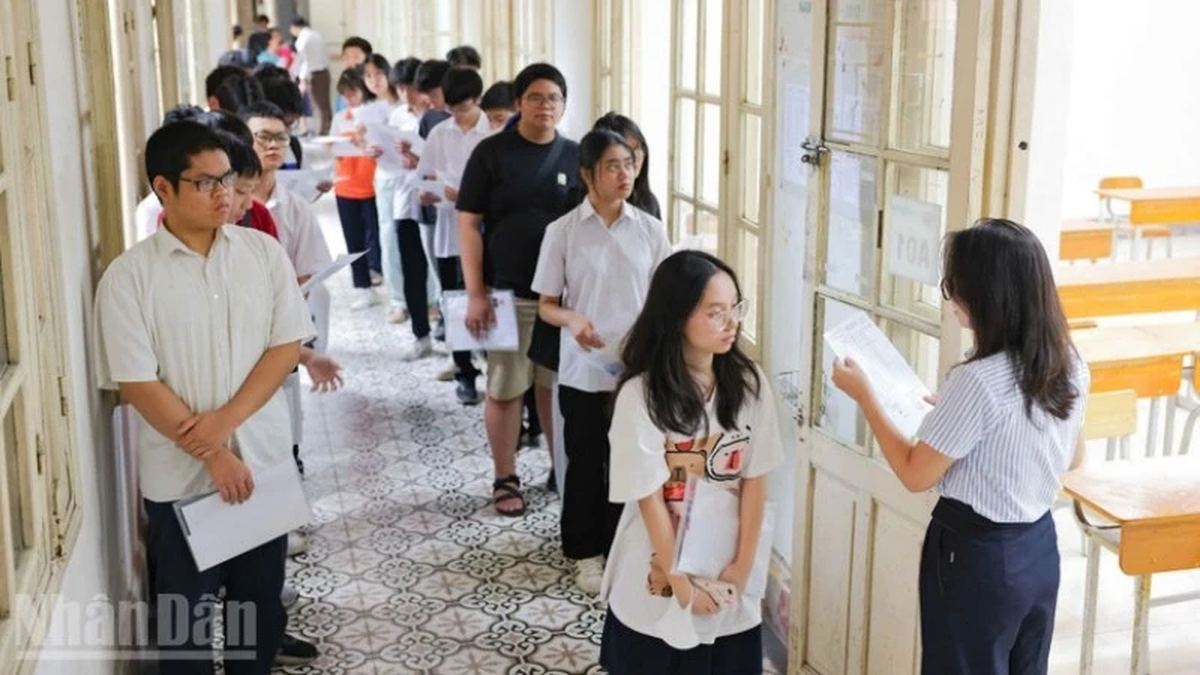



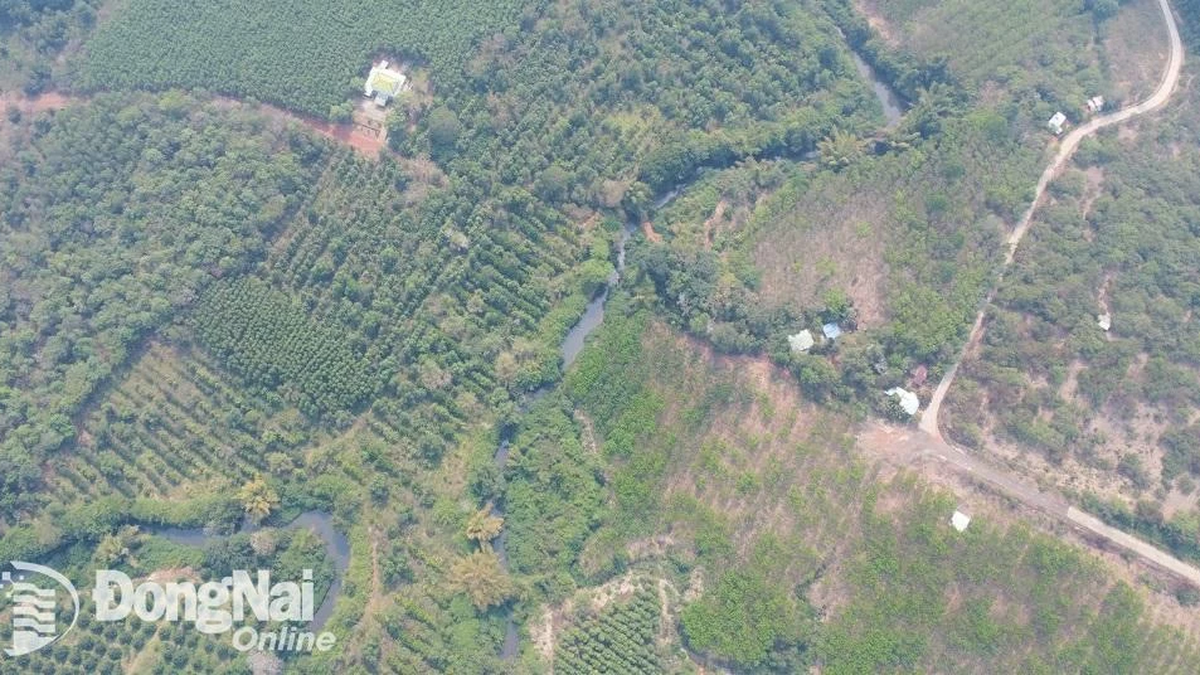
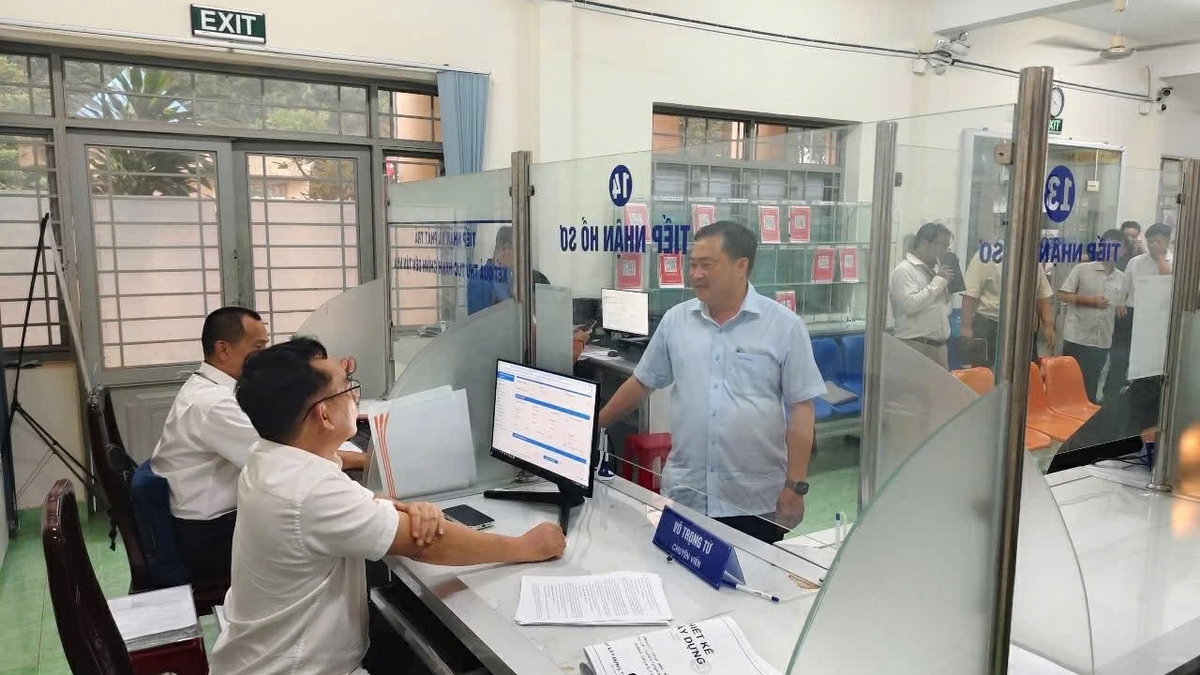

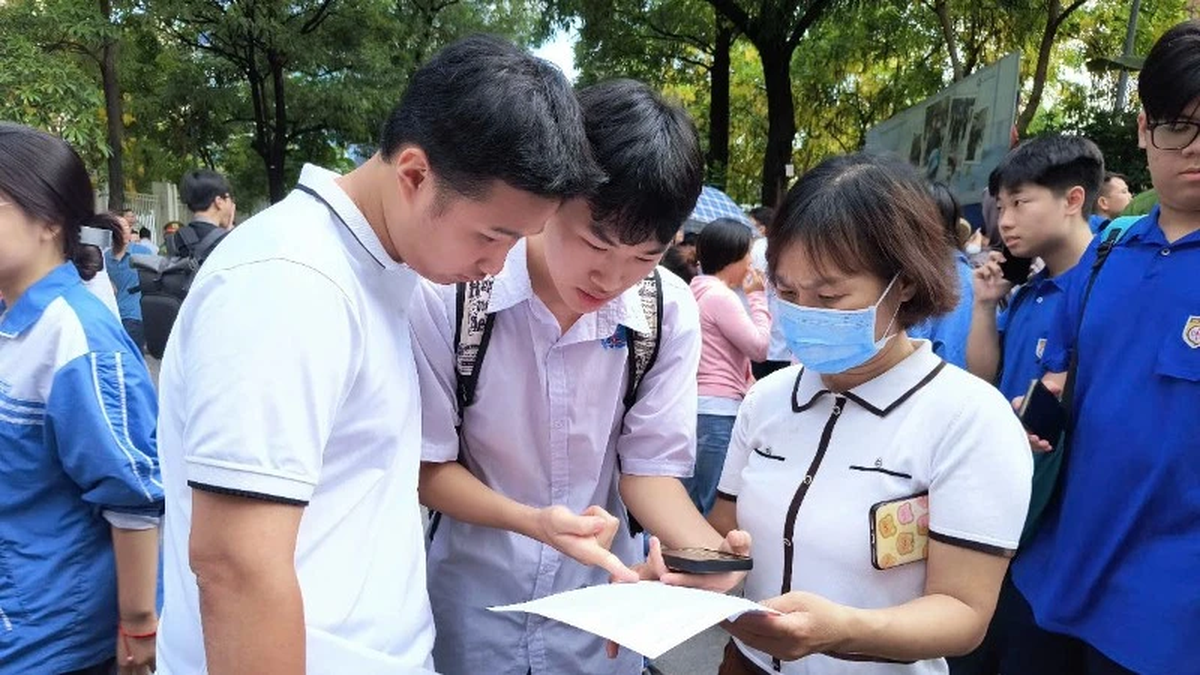
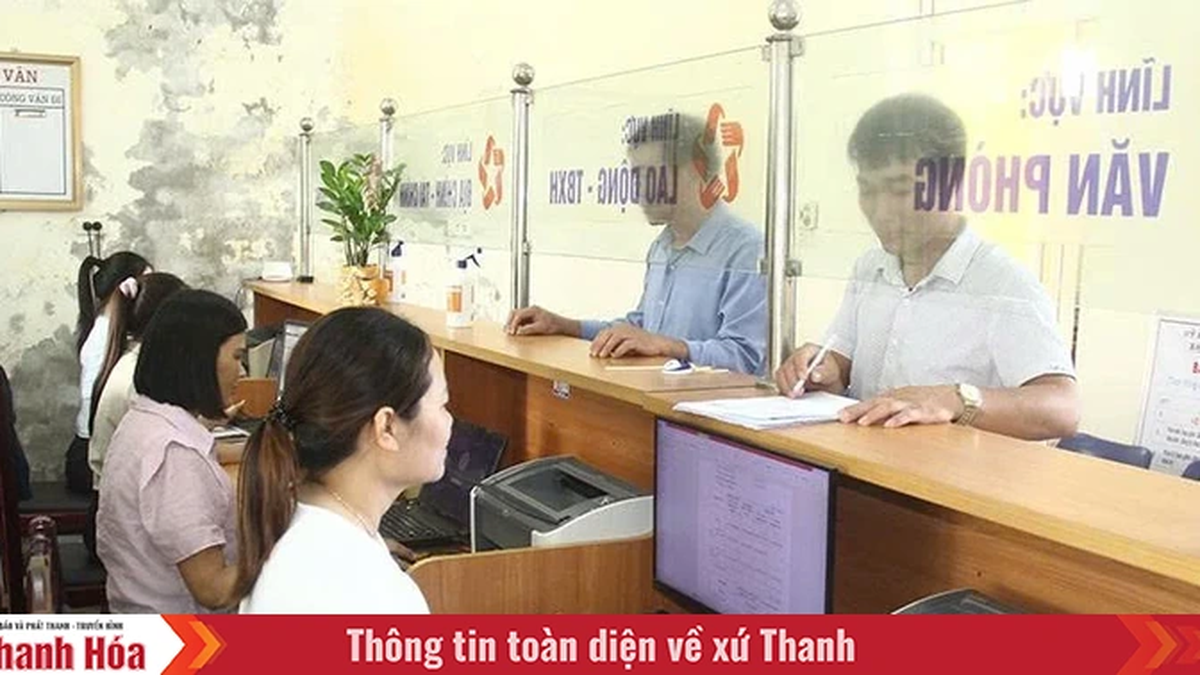




















































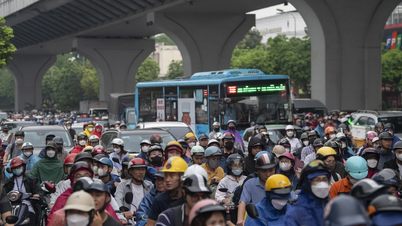

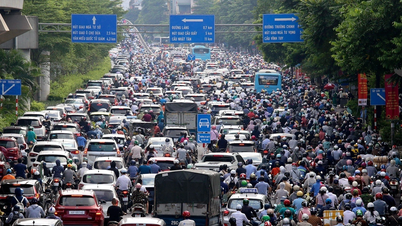


































Comment (0)